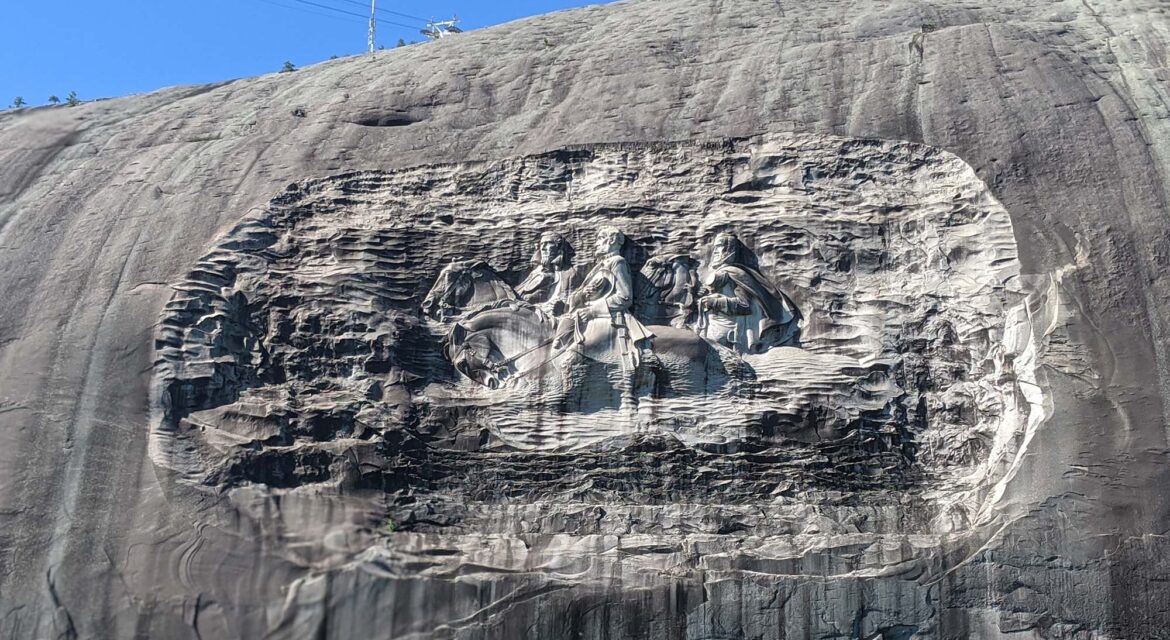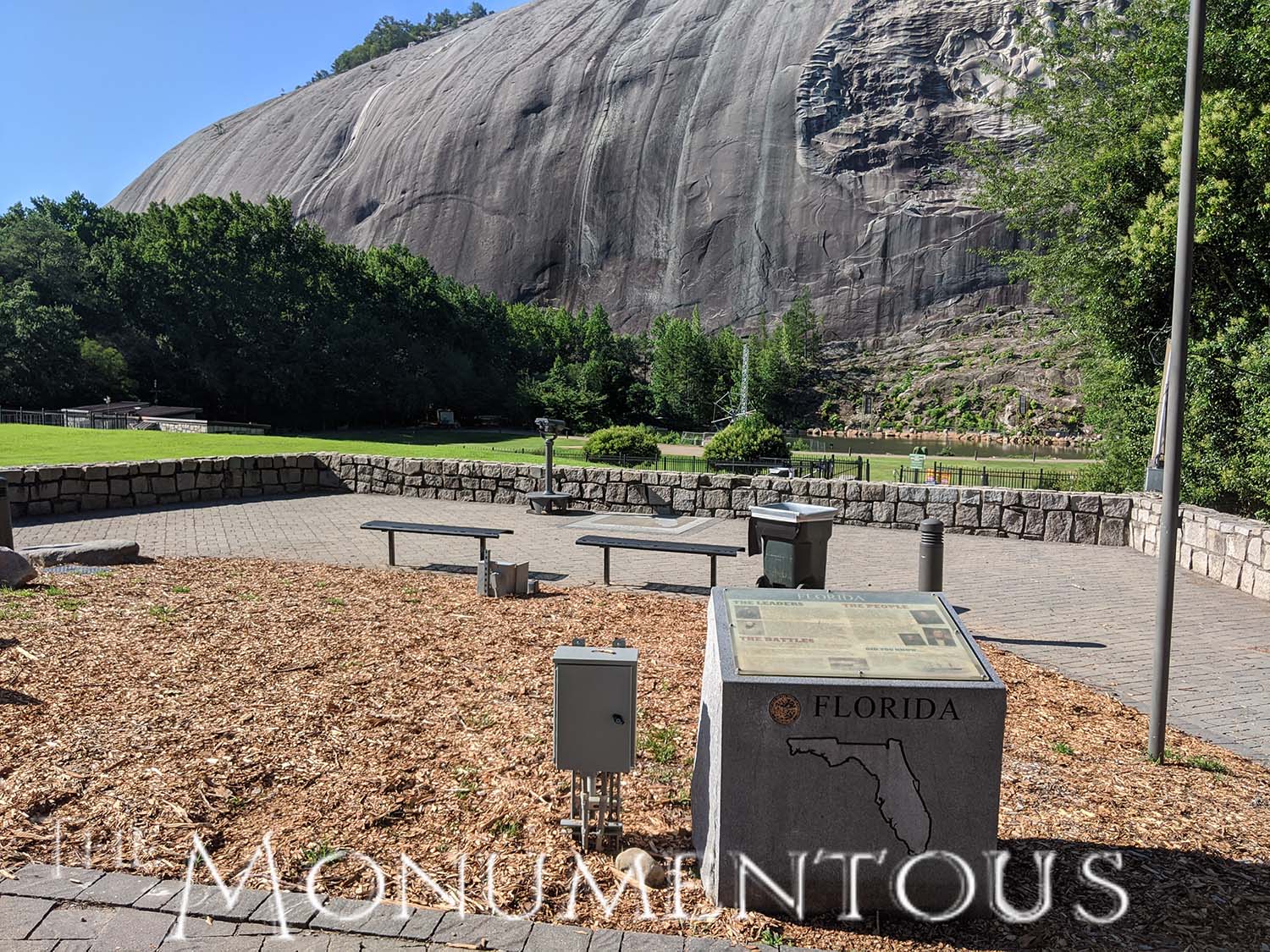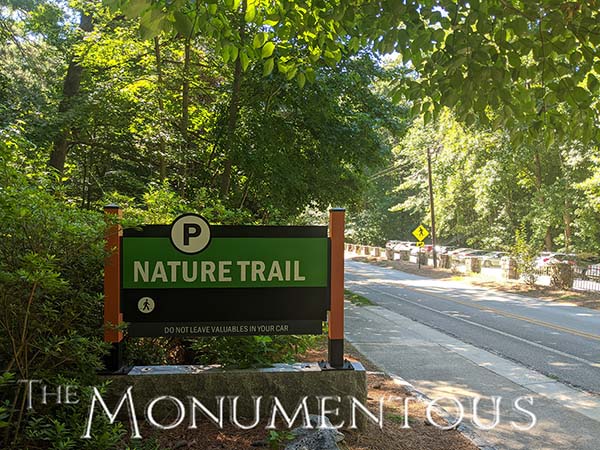 Located just outside of the city of Atlanta, Stone Mountain Park has become the most visited attraction in Georgia. Featuring the natural beauty of expansive woodlands, miles of hiking trails, and numerous recreational activities, there is no shortage of things to do. However, the world’s largest relief sculpture on Stone Mountain itself is the most identifiable and notable feature of the park.
Located just outside of the city of Atlanta, Stone Mountain Park has become the most visited attraction in Georgia. Featuring the natural beauty of expansive woodlands, miles of hiking trails, and numerous recreational activities, there is no shortage of things to do. However, the world’s largest relief sculpture on Stone Mountain itself is the most identifiable and notable feature of the park.
The Confederate Memorial Carving is just one of the numerous attractions that the park contains, but the legacy that it represents to the past and for the future of the park highlights how monuments can define the legacy of an entire region. Doing so can attract attention and spur positive change in ways that would otherwise be impossible.
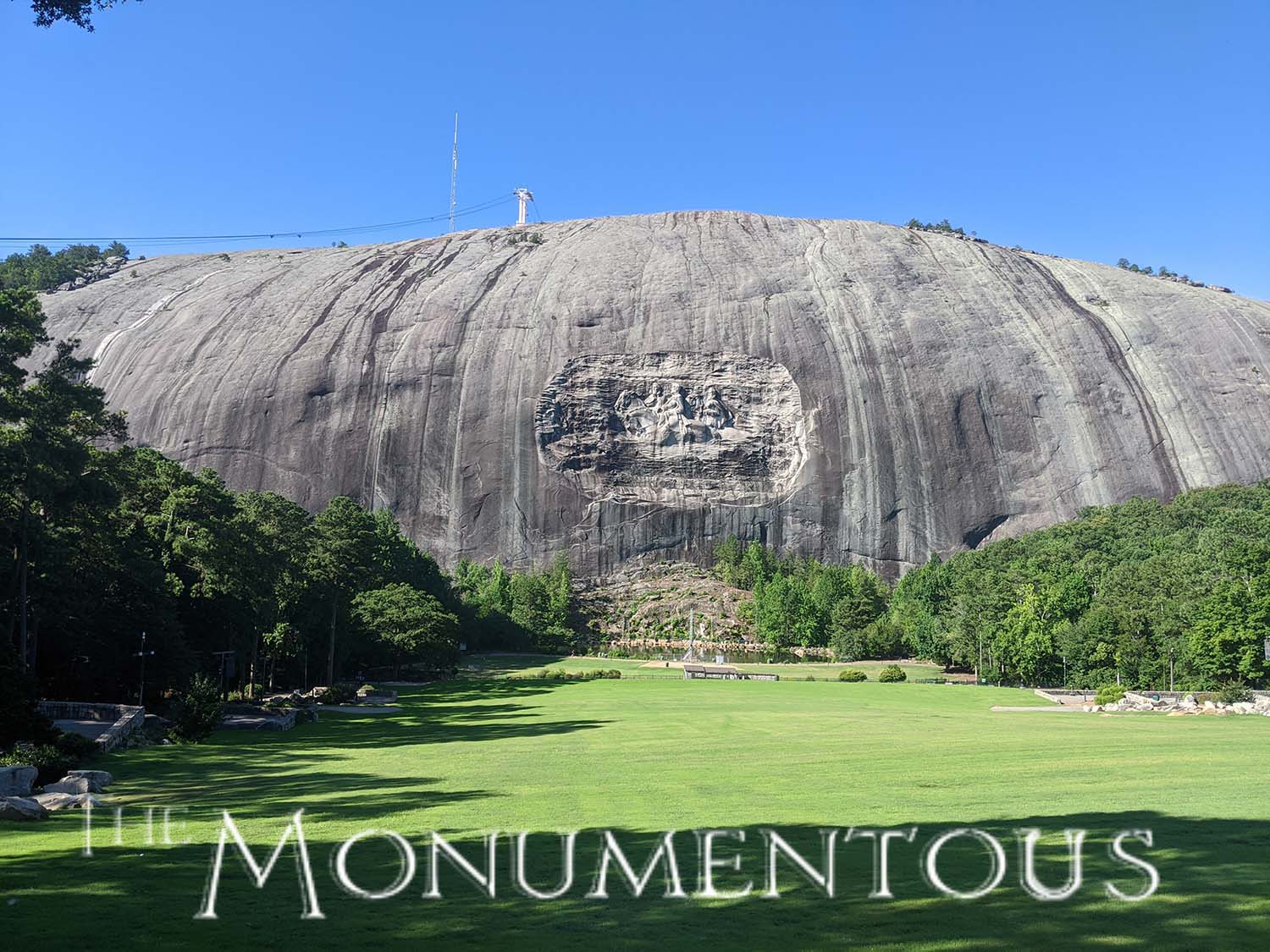
The World’s Largest Relief Sculpture
There is archeological evidence that Stone Mountain itself has been a gathering spot for thousands of years. Creek Indians used it as a place to meet with the Cherokees in the 1700s, but white settlers began to quarry the mountain for granite in 1845. During the 1960s the park was developed by the state, which was around the time the world’s largest relief sculpture was completed, even though it was begun decades earlier.
 The Confederate Memorial Carving depicts three major Confederate leaders of the Civil War and measures 76 by 158 feet. The carved surface of the mountain shows President Jefferson Davis and Generals Robert E. Lee and Thomas J. “Stonewall” Jackson on their favorite respective horses. A walk-up trail to the top of Stone Mountain allows visitors to stand above the relief itself, which is over 400 feet in the air.
The Confederate Memorial Carving depicts three major Confederate leaders of the Civil War and measures 76 by 158 feet. The carved surface of the mountain shows President Jefferson Davis and Generals Robert E. Lee and Thomas J. “Stonewall” Jackson on their favorite respective horses. A walk-up trail to the top of Stone Mountain allows visitors to stand above the relief itself, which is over 400 feet in the air.
Conceived in 1912 by the Daughters of the Confederacy, the project took almost 60 years to be completed. Gutzon Borglum was the first sculptor hired for the project and began work on what was set to be a far more ambitious design in 1923, but ended up leaving the job and finding another mountain-carving project at Mount Rushmore. Work was resumed in 1925 around a concept that would focus on the three figures of the Confederacy on horseback, but funding limitation caused work to stop in 1928.
After the state of Georgia purchased the mountain and surrounding land in 1958, Walter Kirkland Hancock was selected in 1964 to complete the project using new carving tools. A dedication ceremony was finally held in 1970 with the finishing touches being put on the relief in 1972.
The massive sculpture that took nearly 60 years to complete is the most notable attraction in the park, but there are various other landmarks and activities that allow residents and visitors to enjoy the history and scenery that has been cultivated at Stone Mountain Park.
Historical Attractions, Outdoor Activities and Family Areas
While the Confederate Memorial Carving dominates the list of attractions at Stone Mountain Park, visitors can have a variety of different experiences throughout the park, some of which are directly related to the sculpture. The SkyRide tram to the top of the mountain allows visitors to see the sculpture from a totally different perspective. Since the 1960s, millions of visitors have taken this tram. The walk-up trail is also open daily from dawn to dusk.
 Additionally, Stone Mountain Memorial Lawn has thirteen terraces with information about each state that was part of the Confederacy. These displays tell of their history during the Civil War, while the lawn itself is a place where visitors can watch fireworks displays as well as the Stone Mountain Park Lasershow. Other annual events like Stone Mountain Christmas and the Pumpkin Festival take place in and around this space throughout the year.
Additionally, Stone Mountain Memorial Lawn has thirteen terraces with information about each state that was part of the Confederacy. These displays tell of their history during the Civil War, while the lawn itself is a place where visitors can watch fireworks displays as well as the Stone Mountain Park Lasershow. Other annual events like Stone Mountain Christmas and the Pumpkin Festival take place in and around this space throughout the year.
There are numerous other historical attractions located throughout the park. Those include Historic Square, which is a collection of original Georgia home and antiques, Grist Mill, which is a mill that is over 100 years old that was moved to the Park from its original site in 1965, and the Quarry Exhibit, which is an outdoor display that was created to tell the story of the granite industry. The Historical & Environmental Education Center showcases much of this history in a different way.
These historical attractions are in addition to outdoor activities that range from golf to hiking to fishing. There are numerous trails throughout Stone Mountain Park, many of which are clearly marked to allow visitors to easily traverse the area.
These activities are in addition to numerous playgrounds and picnic areas where children and families can enjoy the park in whatever way they want. This variety has helped to create a variety of revenue sources for the entire park.

Tickets, Passes and Gifts
One-day tickets and Mountain Memberships provide Stone Mountain Park with a critical source of revenue. Mountain Memberships provide visitors with year-round access to all of the attractions, seasonal live entertainment and more. Add-on options for the Skyride and SkyHike provide additional value to visitors and revenue to the park.
The Marketplace Giftshop contains a wide selection of Stone Mountain Park souvenirs and food while the JJ Maddox General Store, located at the entrance to the Historic Square, sells tickets to the Historic Square along with various food items. Skyview Souvenirs provide visitors with a personalized souvenir.
 Campsites at Stone Mountain Park include options around RV sites and traditional tent sites, each of which has different costs associated with them. The Stone Mountain Inn features an outdoor courtyard swimming pool and buffet-style southern cooking served in the Mountainview Restaurant.
Campsites at Stone Mountain Park include options around RV sites and traditional tent sites, each of which has different costs associated with them. The Stone Mountain Inn features an outdoor courtyard swimming pool and buffet-style southern cooking served in the Mountainview Restaurant.
These features have also helped to enable Stone Mountain Park and the Confederate Memorial Carving to become an essential part of maps and guides to the region that allows the site to draw nearly 4 millions visitors per year. This popularity has ensured that the park continues to attract the attention of both residents and visitors, although the legacy it represents to the past and for the future of Georgia and beyond is far more significant.
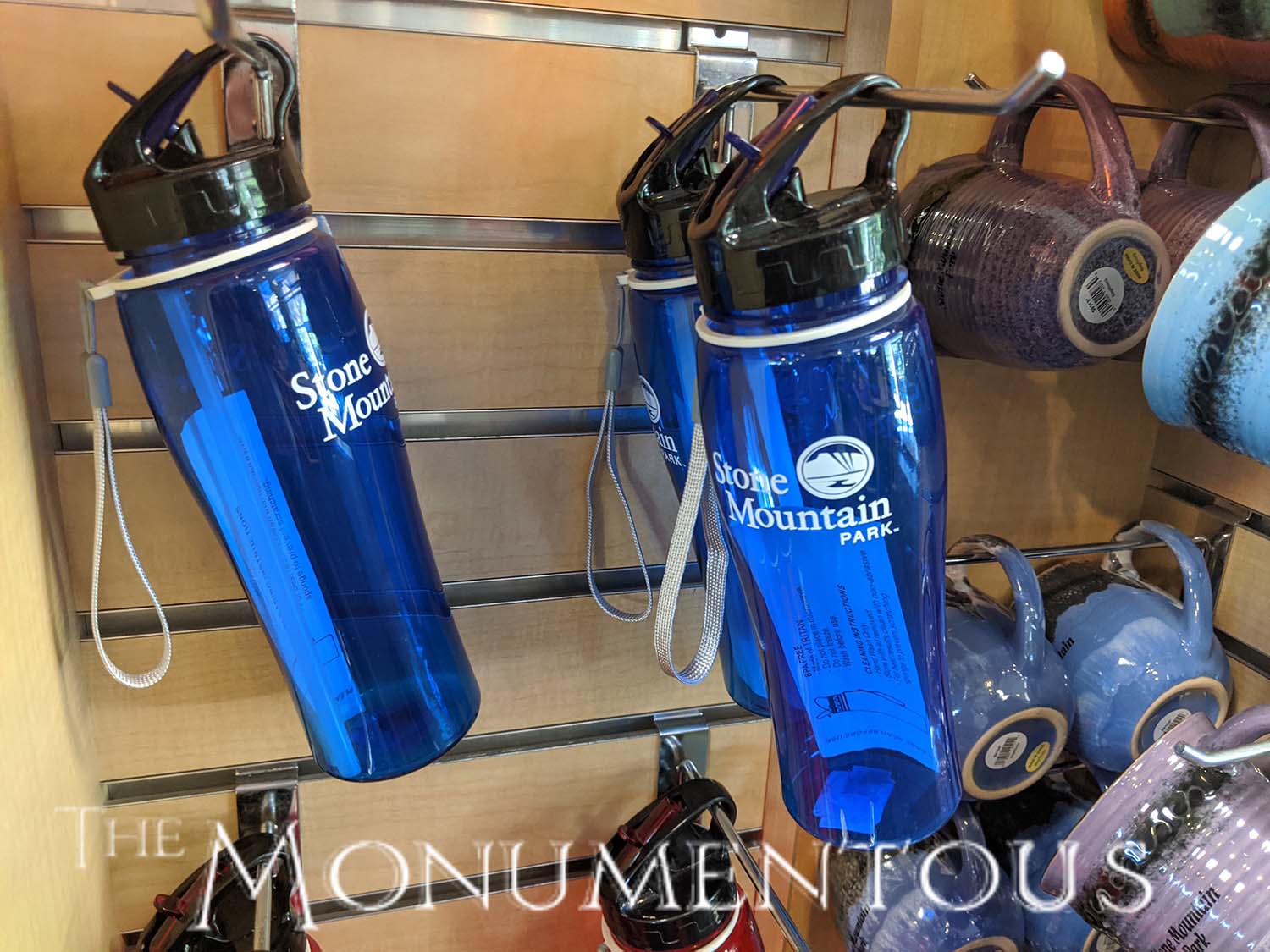
The Evolving Legacy of Stone Mountain
 Many view Stone Mountain in terms of the history and heritage of the South, but others look to the past and present to see it as a shrine to white supremacy. In 1915, the second iteration of the Ku Klux Klan took place on top of Stone Mountain, while in 1923, the owner of Stone Mountain gave the Klan an easement to hold rallies atop the mountain which continued until it was purchased by the state of Georgia. The fact that the Confederate Memorial depicts three of the most notable leaders of the Confederacy has caused many to further associate the monument and the entire park with white supremacy rather than Southern heritage.
Many view Stone Mountain in terms of the history and heritage of the South, but others look to the past and present to see it as a shrine to white supremacy. In 1915, the second iteration of the Ku Klux Klan took place on top of Stone Mountain, while in 1923, the owner of Stone Mountain gave the Klan an easement to hold rallies atop the mountain which continued until it was purchased by the state of Georgia. The fact that the Confederate Memorial depicts three of the most notable leaders of the Confederacy has caused many to further associate the monument and the entire park with white supremacy rather than Southern heritage.
While many have advocated for the removal of the Confederate Memorial Carving, others are focused on smaller changes that are more attainable due to both logistics and costs. The evolving legacy that the Confederate Memorial Carving itself has come to represent highlights how monuments can drive change and define important conversations for entire societies.

